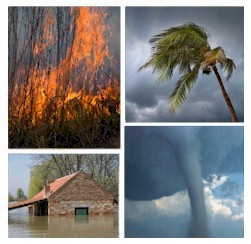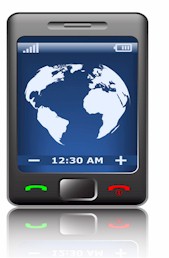|
|


Emergency Notification Systems
 This section of our technical library presents articles written about Emergency Alert Systems and Disaster Recovery definitions, terms and related information.
This section of our technical library presents articles written about Emergency Alert Systems and Disaster Recovery definitions, terms and related information.
The 911Broadcast emergency notification and alert service can deliver a large number of phone calls using a network of phone systems employing digital phone lines simultaneously. Should a disaster such as a snow storm, wild fire or flood hit your area, 911Broadcast systems can alert your community quickly providing specific instructions if an evacuation is required.
This service is available using our emergency broadcasting systems. If a dangerous chemical spill occurs in your community, you can target specific areas to call. If a severe snow storm hits your area, your community can be notified of school closings or event cancellations.
Contact DSC Today for a FREE analysis and quote and to learn more about our emergency notification systems and services.
FCC: Alert system so last century
BY Dibya Sarkar
Reprint: www.fcw.com
Federal Communications Commission officials said they intend to correct deficiencies in the nation's emergency warning capability, with the support of industry and nonprofit groups whose leaders say they have sought the FCC's attention on the matter for several years.
Critics of the Emergency Alert System said the commissioners' Aug. 12 notice in the Federal Register of proposed rulemaking is the first significant federal step in years to create an effective nationwide system for warning the public of emergencies.
The proposed FCC rules draw heavily on the recommendations of two groups: the nonprofit Partnership for Public Warning and the Media Security and Reliability Council, an industry-led group that serves as a federal advisory committee. The groups formed in the past two years to propose improvements to the current alert system.
FCC members appear to fully support the effort. "Our task is not easy, but we cannot afford to wait," said FCC Commissioner Jonathan Adelstein in a statement about the alert system. "The public warning capability of communications technologies should be among the highest priorities of this agency."
The public alert system, which has existed in some form for the past 50 years, was designed to broadcast presidential messages to the public through TV and radio signals. It has never been used for that purpose. State and local government officials, however, have used it effectively for issuing severe weather warnings and Amber Alerts for missing children.
Proponents of improving the current system said the FCC's challenge is to create a coherent national warning capability. The problem isn't a lack of technology, said Kenneth Allen, executive director of the Partnership for Public Warning.
Many technologies, such as electronic messaging systems, personal digital assistants, cell phones and the Internet, could be used to reach millions of people, he said. But, he added, "nobody has sat down and put together the pieces into a coherent national warning capability."
Some proponents of a better warning capability have proposed that the Homeland Security Department oversee the alert system. Those proponents, who include Frank Lucia, retired FCC emergency communications director, said DHS officials have the necessary financial resources and can work with state, local, private and nonprofit groups to develop standards and policies.
Lucia said federal officials will struggle to get businesses and industry to carry state and local emergency messages unless more resources are invested. Industry and business officials would be less reluctant to participate "if [they] felt the government was 100 percent behind the system and provided some resources," he said.
Another problem facing the commissioners is the diminishing amount of time people spend watching television or listening to the radio, the two means of communication on which the alert system relies. Although 98 percent of households have a television, the average set is in use only 31 percent of the day, according to recent FCC statistics.
On average, Americans listen to the radio for 1.5 hours a day between 6 a.m. to 6 p.m., FCC researchers found.
Some cities and regions have adopted newer technologies for issuing emergency alerts, but other municipalities lack funds to use them, Lucia said. Making the alert system interoperable with other technologies at the local level is an additional problem.
Lucia said one technical solution under consideration is the Common Alerting Protocol (CAP), a nonproprietary data interchange format that can simultaneously transmit emergency alerts through different communication networks.
The Organization for the Advancement of Structured Information Standards, an international standards body, has adopted CAP as a standard.
FCC begins brainstorming
Federal Communications Commission officials have turned to the public for ideas on updating and fixing deficiencies in the nation's Emergency Alert System. Among the questions FCC officials have raised are:
- What should be the roles of federal agencies involved in the public alert system?
- Should broadcasters be required to carry state and local emergency messages?
- Should FCC officials create emergency alert guidelines for states and require state officials to file their plans with the FCC?
- How can digital technologies improve the system?
- How effective are radio and television for sending emergency messages?
- Would the public alert system be more effective if it was combined with alerts carried by alternative means, such as electronic messaging, the Internet, or cellular and satellite systems?
- Should the FCC create an integrated alert system with a common interface that connects all emergency managers, regardless of the technologies they use?
- What are the best ways to deliver emergency alerts to people with hearing and sight disabilities and to people who don't speak English?
Source: Federal Communications Commission
Emergency XML Messaging Solutions
 Automatically send emergency phone messages from your computer system using our XML push software.
Let our phone system automatically access information from your computer systems and web servers using our XML Pull and web information retrieval logic.
Alerts can be automatically broadcast to systems administrators or to an entire department based upon an external event such as a power failure or system failure.
Other applications may be as simple as wakeup calls or weather alerts that are triggered automatically from your own computer systems or websites.
Automatically send emergency phone messages from your computer system using our XML push software.
Let our phone system automatically access information from your computer systems and web servers using our XML Pull and web information retrieval logic.
Alerts can be automatically broadcast to systems administrators or to an entire department based upon an external event such as a power failure or system failure.
Other applications may be as simple as wakeup calls or weather alerts that are triggered automatically from your own computer systems or websites.
Using standard XML protocol, develop applications that transmit messages to our phone systems to perform the required phone messaging tasks. This could including simply sending a single message to one phone number, several phone numbers, or to an entire list of numbers.
The emergency message can be sent in the form of a wav file or a text file that is automatically converted using our text to speech software. Several voice wav files can be designated in the XML push message, giving you maximum flexibility.
Contact DSC for a FREE analysis and to learn more about our automatic phone messaging systems and services.
XML Messaging and How It Works
XML emergency messages can be easily sent from your existing computer applications. Database Systems Corp. supports several "canned" XML message formats, but can develop new formats that fit your requirements.
|




 This section of our technical library presents articles written about Emergency Alert Systems and Disaster Recovery definitions, terms and related information.
This section of our technical library presents articles written about Emergency Alert Systems and Disaster Recovery definitions, terms and related information.
 Automatically send emergency phone messages from your computer system using our XML push software.
Let our phone system automatically access information from your computer systems and web servers using our XML Pull and web information retrieval logic.
Alerts can be automatically broadcast to systems administrators or to an entire department based upon an external event such as a power failure or system failure.
Other applications may be as simple as wakeup calls or weather alerts that are triggered automatically from your own computer systems or websites.
Automatically send emergency phone messages from your computer system using our XML push software.
Let our phone system automatically access information from your computer systems and web servers using our XML Pull and web information retrieval logic.
Alerts can be automatically broadcast to systems administrators or to an entire department based upon an external event such as a power failure or system failure.
Other applications may be as simple as wakeup calls or weather alerts that are triggered automatically from your own computer systems or websites.